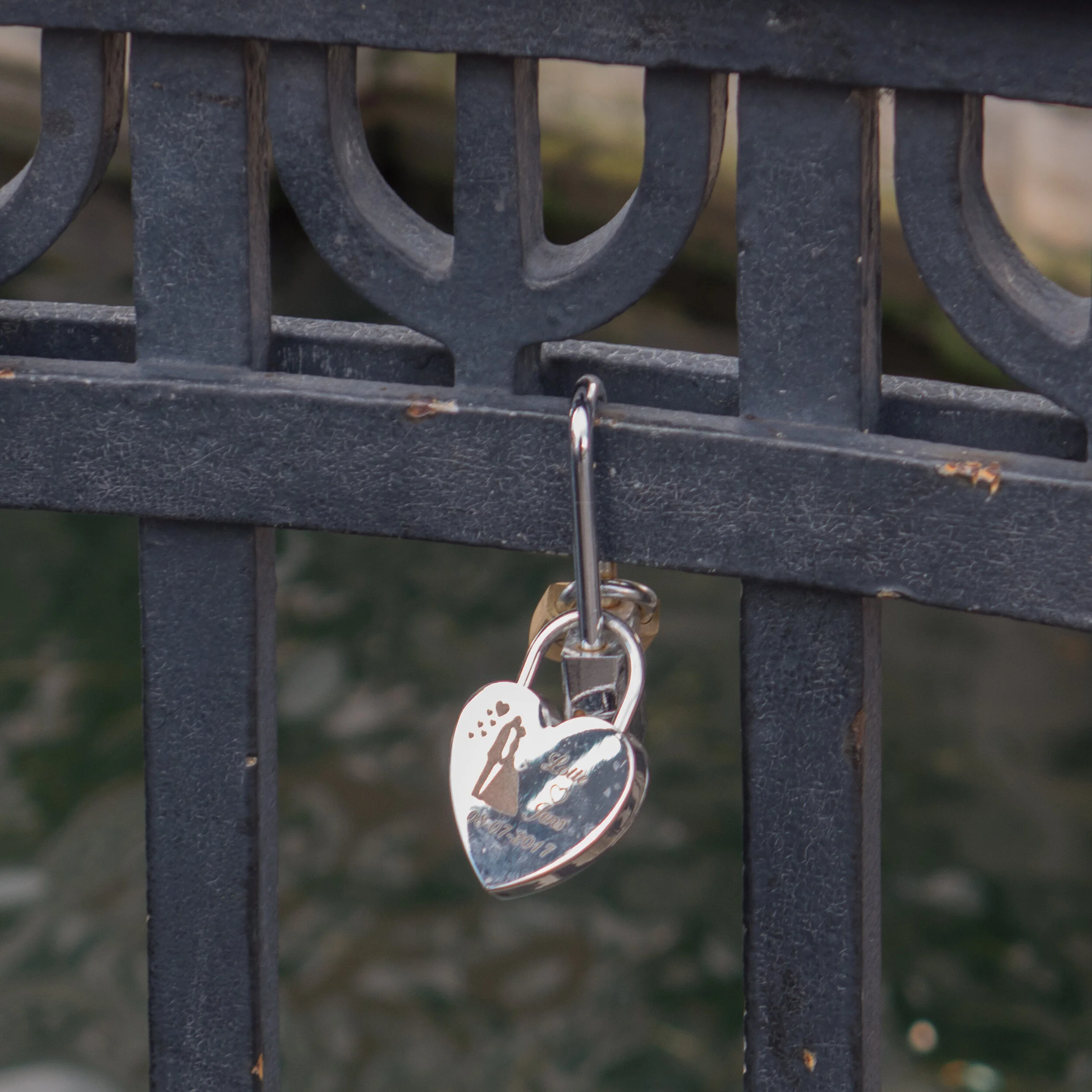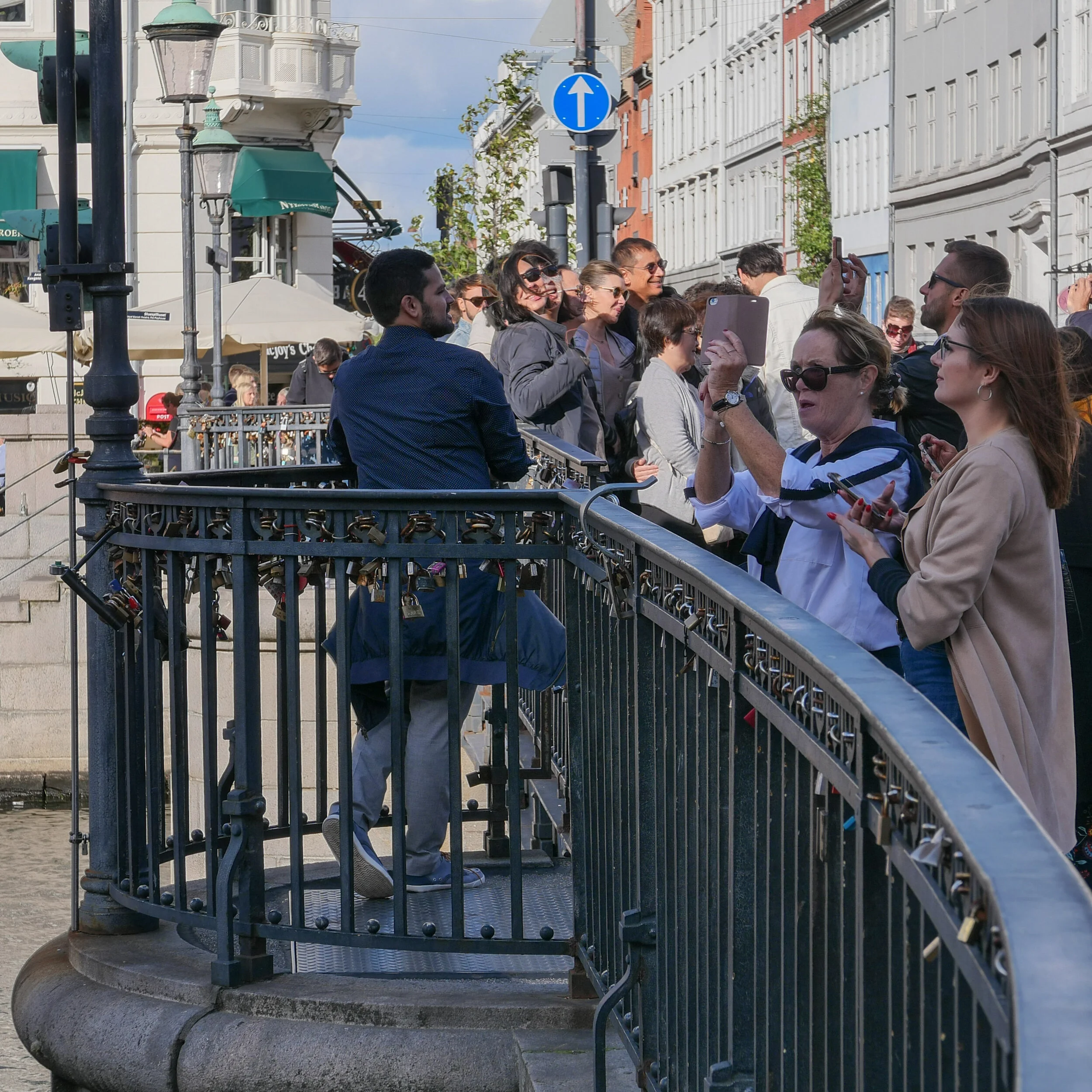where do all the tourists go?
/Over the last year or so, I have detected a change of attitude about tourism in the city.
Tourists and visitors to the city, coming for business or for conferences and events, are still an important source of revenue - many in the city are employed in holiday industries, in the hotels, in restaurants and of course shops rely, to some extent, on tourists shopping - but there have been articles in newspapers recently that have stared to question the benefits of tourism and look at the benefits weighed against the cost.
Pressures from the numbers of tourists visiting Copenhagen are not yet as marked as the more obvious and better publicised problems in cities like Amsterdam, Barcelona or Venice but certainly people have started to question the impact from Airbnb - particularly where complete apartments are now let through much of the year so this has begun to distort the long-term rental market - and some journalists have asked questions about the number of large cruise ships that stop here and about the impact they have through pollution. But the main criticism is that disproportionate numbers of visitors in the city focus their time on remarkably few sites so crowds of tourists are concentrated in areas like Strøget - the Walking Street - Nyhavn, parts of Christianshavn and along the harbour around the Little Mermaid and these parts of the city can be unpleasantly crowded, not just for local people but actually for visitors as well.
There is also a problem with tour buses that want to drop passengers close to main sites but then park waiting for their passengers to return either blocking the bus stops for public transport or by blocking the front of buildings the visitors actually want to see. Recently, I wanted to take a photograph of the front of the Royal Theatre on Kongens Nytorv for a post here but over three days there were at least two tourist buses parked across the front each time I went past.
By coincidence, thinking about this post, I came across a fascinating article on line by Colin Marshall on the Open Culture site from June of this year. He wrote there about 136 maps of major cities across the world produced for a project called Locals and Tourists and published in a larger project The Geotaggers’ World Atlas, by Eric Fisher who has used MapBox, Twitter and data from Gnip to plot photographs taken of cities that have been uploaded to the internet.
The central area of the Copenhagen map is reproduced here with red indicating photographs that appear to have been taken by tourists while blue are images that are probably by local people - determined primarily because they are Tweeting from the same location for at least a month - and yellow could be either.
When data is presented in this way, it is easy to see the densely-packed areas where most photographs were taken with Nyhavn - the long rectangle at the centre of the map that extends up to large blob that marks Kongens Nytorv - the large public square at the city end of the New Harbour - and just above that there is the distinct shape of the royal palace with the circle of the main square and long narrow strips running out to the right to the harbour in one direction and to the Marble Church in the other. The large public square in front of city hall and, nearby, Tivoli are the densely-packed but slightly more scattered areas of red on the left side of the city centre.
Roads can be picked out clearly and give a framework for location and one interesting feature of the complete map, right, that shows the wider area around the city, is the long narrow line of yellow that is the railway bridge across to Malmö with good and photogenic views of the sound.
The data was collected in 2013 but more recent published data from 2017 corroborates the general conclusions. In that year, there were around 7 million visitors to the city and more than 60% included Nyhavn in their trip so, by rough calculation, that suggests that the number of visitors walking up and down Nyhavn in a year was equal, approximately, to the total population of the country.
With the opening of a new bridge from the end of Nyhavn for cyclists and pedestrians to cross the harbour to Christianshavn, Nyhavn has become not just a destination but also a major route. Shops close to the harbour on the west side of Nyhavn have seen a marked and welcome increase in business and for several shops it has meant the difference between declining trade and the possibility of a failing business before the bridge opened and surviving now.
But an article in Politiken by Søren Astrup in September 2017 pointed out that, even at that early stage, not long after the bridge opened, there was an obvious problem with the possibility for accidents as tourists, looking at maps or at the view or busy chatting came into contact with fast moving bike traffic. Planners are responsible for road markings and barriers and some changes have been made, particularly at the bottom of the bridge on the city side, but tourists also have a responsibility and have to learn to be more aware.
This is particularly true of the green man system at traffic lights that in too many cities seem to be treated as respect-it-or-ingnore-it advice rather than as an instruction but, because biking is taken seriously here, many cyclists are heading to or from work, can be in a hurry, and many cycle long distances so when you get up momentum (speed) you do not appreciate a tourist sauntering into the bike lane to take a better photo or stepping out onto a crossing because it sounds clear …. ie they can’t hear a car so step out without looking.
The real problem in Nyhavn is people taking photographs and particularly selfies. Most tourists would say well that is pretty harmless and surely it doesn’t hurt locals to wait just a few seconds while they get that perfect shot.
But I’m much less tolerant of selfies now I have actually moved to an apartment on Nyhavn.
I have deliberately changed my behaviour to walk down the shady side when possible, although I live on the sunny side, simply because there are slightly less people taking photos. It may be your once in a life time shot but for me, heading to the metro, it may well be the ninth or tenth time I’ve had to walk out into the road in just over 100 metres to get around a selfish-selfie taker.
Do people taking selfies realise just how much space they take up on a narrow or crowded path with or without a selfie stick?
A few weeks back I was heading up towards Kongens Nytorv on the Charlottenborg side and walking along the pavement against the water. I noticed a woman standing a short distance ahead with her back against the buildings and only noticed her because of the odd pose - even for someone taking a photo with a phone. The phone was held in both hands at arms length with her arms straight out in front so I guess she was long sighted. As I got nearer and, presumably, as she focused on the phone screen or composed the view, she set off straight across the bike lane - cutting between bikes heading out of the city without looking - and walked straight across the road between the moving cars and straight across the bike lane on the water side with bikes heading fast into the city but without taking her eyes off the screen and ended up, with arms still straight out, rigid, taking up the full width of the pavement immediately in front of me. And I mean immediately in front. Inches away rather than feet away. I was walking quite quickly but she moved at a surprising speed so if I had been wearing rubber-sole shoes there would have been black burn marks on the pavement because I had to stop that quickly to stop from walking straight into her. She gave me a withering look - presumably for standing too close and for distracting her - before turning her head back to the outstretched phone and to the perfect photo she wanted to take. I had to step out into the bike lane - after checking - to get round her.
When I’m trying to get somewhere it’s bloody annoying although looking out of my apartment it’s more entertaining and a mind-boggling view of weird human behaviour. In the last couple of weeks alone I watched someone who looked like a Japanese tourist who set up his camera on the top of his case with wheels and then made endless trips between the edge of the harbour and his case to take shot after shot after shot until he got just the right angle of his face against the buildings opposite and there was a curious girl who did the splits along the raised timber that marks the edge of the quay for her photo although now, I appreciate, that the timber is, remarkably, like the bar in women’s gymnastics although balancing three metres above the water seemed a little precarious even if, admittedly, it made for an unusual photo. There was also a young couple I took to be Chinese with him in a smart suit and her in an elaborate wedding dress …. Cinderella before midnight meets Marie Antoinette … although they were not strictly taking selfies as they had a photographer with them and she insisted in setting up her camera on a tripod in the middle of the road - again to get what they thought was the perfect photo.
Another trend I’ve spotted is the fake selfie … the girl (usually a girl and usually mid teens) with a striking outfit and a mate or sometimes someone who is obviously the doting mum there to take the perfect shot. The common pose seems to start by dropping the head forward and then doing a great swinging arc to take all the hair in a great circular sweep so it ends up artfully draped down one side of the face but clear of the eyes and the favourite stance seems to be with body angled to face one side or the other, so across the view line from the camera, but looking slightly over the shoulder towards the camera. Again I’m amazed just how many takes and how much discussion it takes to get that perfect spontaneous shot.
Oh and while I’m being grumpy …. the other thing I really really don’t understand is this fad for fixing padlocks to bridges. The first person to do it was being original and presumably romantic if that first lock on that first bridge marked somewhere special where something significant happened … like proposing or promising eternal love and devotion. Now it’s locks on locks on locks.
I’m curious …. do people arrive with pockets full of locks or do they buy them here and exactly how much does it cost the city or the port authority to cut them off at increasingly regular intervals? And what do people do with all those keys?











































